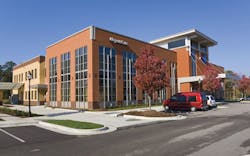Urgent oral care centers: One possible solution could combine emergency and prevention services
By JoAnn R Gurenlian, RDH, PhD
Three times in the past few months my son called for an appointment with his primary care physician for medical illness and was told that he could be scheduled for an examination within three to four weeks. One of those times he needed an emergency appendectomy. Fortunately, that time he was able to go to an urgent care center for immediate treatment. Since we have had this opportunity to avail ourselves of the urgent care system, I began wondering what it might be like to create urgent oral care centers. Think about it for a moment.
Plenty of instances arise in which patients present to hospitals with dental complaints, but their treatment may consist of an occasional extraction or - more likely - pain medicine or an antibiotic. These patients are referred to a dentist, but they may not have a dentist of record. And, what about preventive oral health care? While it may not be considered “urgent,” it is certainly necessary and often not available. For the disenfranchised, the underserved, and the unserved, an urgent care center may be another avenue to open a door to oral health care.
Granted, we have safety nets, but they are places that extract teeth. I am thinking about creating a center within an urgent care facility where we can start addressing preventive and therapeutic oral health care. Imagine advanced dental hygiene practitioners (ADHP) and teledentistry partnering in these centers. This is an opportunity for interdisciplinary collaboration among physicians, physician assistants, nurses, dentists, and dental hygienists.
Patients can present to this center to have their pain addressed or a lesion evaluated for potential biopsy, but they also could receive a prophylaxis and other preventive oral health care. Dentists can choose to be on staff or referrals can be made to local general and specialty practices. The urgent care center could have an established relationship with nursing homes or other community centers so that patients who are ambulatory could receive regular preventive oral health services versus waiting months for care or never receiving any care at all.
Envision this differently from a government-funded facility. Think of this as an independent practice, owned and operated by advanced practitioners in partnership with other health-care providers. Imagine this as interdisciplinary health care. If the patient has cardiovascular issues, those can be addressed by the on-staff physician or physician assistant. If the patient has diabetes, his or her glucose can be monitored on-site. If the patient presents to the on-staff nurse for a health complaint but also shows signs of an oral health problem, the nurse can refer that person immediately to the staff ADHP or dentist for evaluation and treatment. We professionals connect, collaborate, and work together to improve the health of the people who walk through the doors of that facility.
To some of you this concept may not seem novel, and to others it may be groundbreaking. The idea here is to work on generating concepts that are different from the traditional models, so that we are creating opportunities for new approaches that open doors for the public to access the oral health-care system. As the same time, we want to promote models of interdisciplinary health care, using resources we have not capitalized on before.
One thing is certain: our health care system will be changing with this new administration. What those changes will be have yet to be determined. Dental hygienists should be at the forefront, leading by design and intention to offer as many opportunities as possible to marshal improvements in oral health care for the public. RDH
JOANN R. GURENLIAN, RDH, PhD, is president of Gurenlian & Associates, and provides consulting services and continuing education programs to health-care providers. She is a professor and dental hygiene graduate program director at Idaho State University, and past president of the International Federation of Dental Hygienists.

